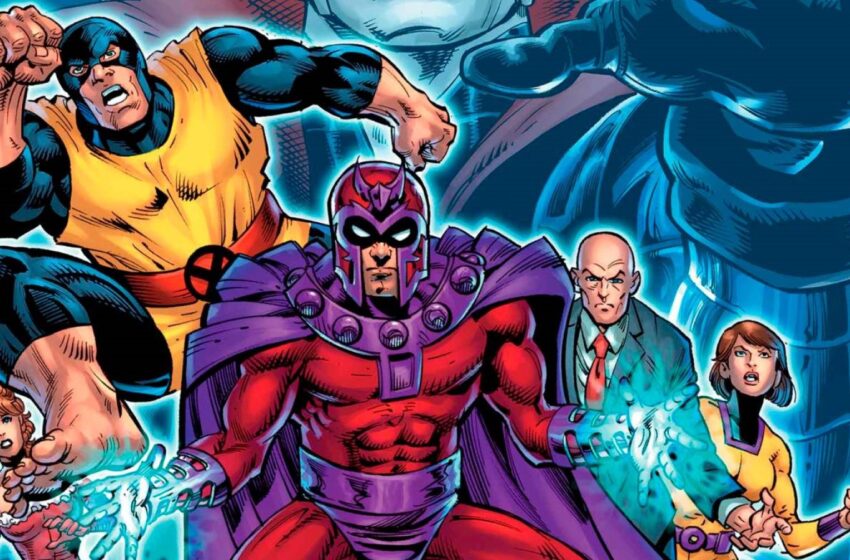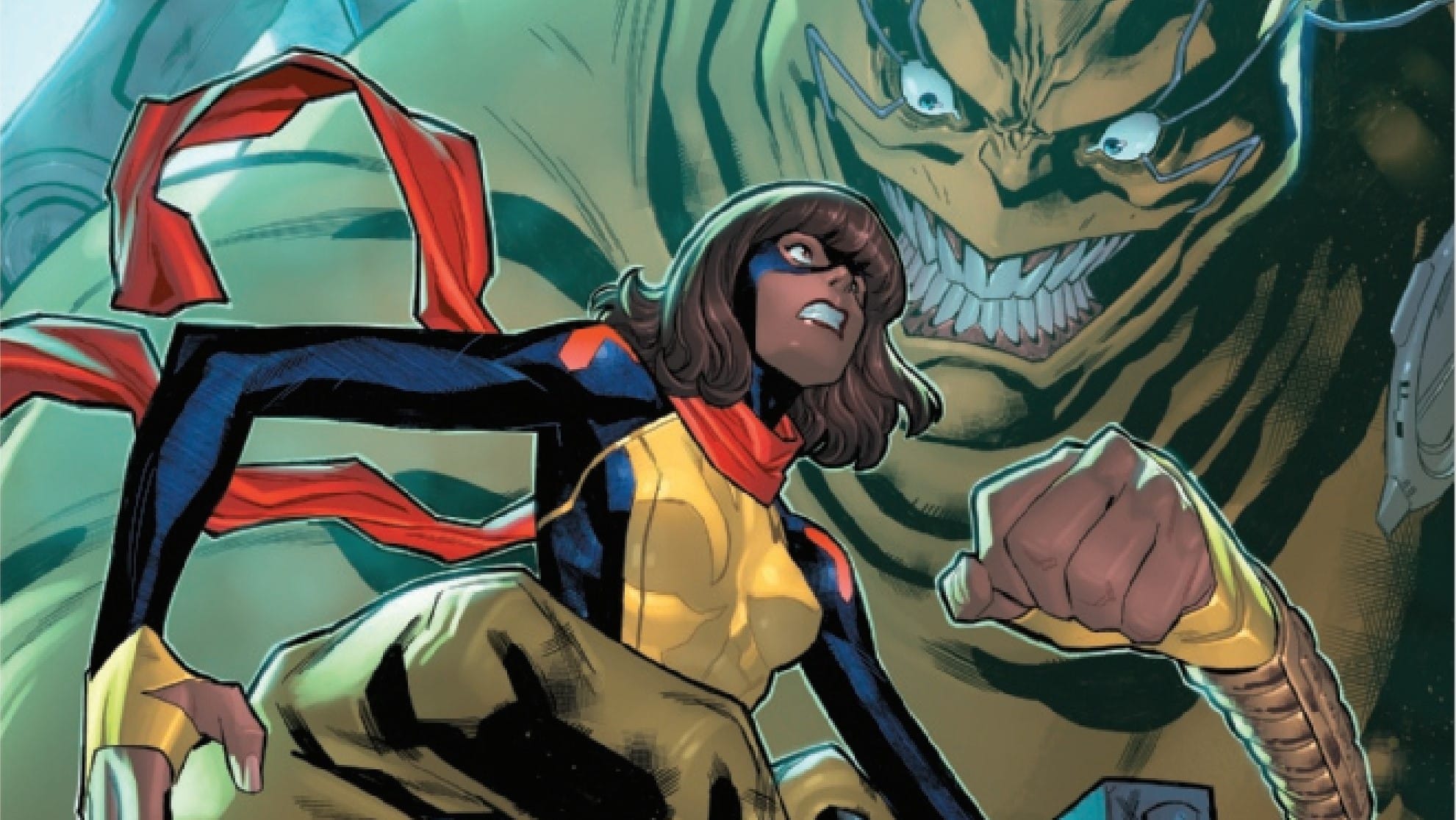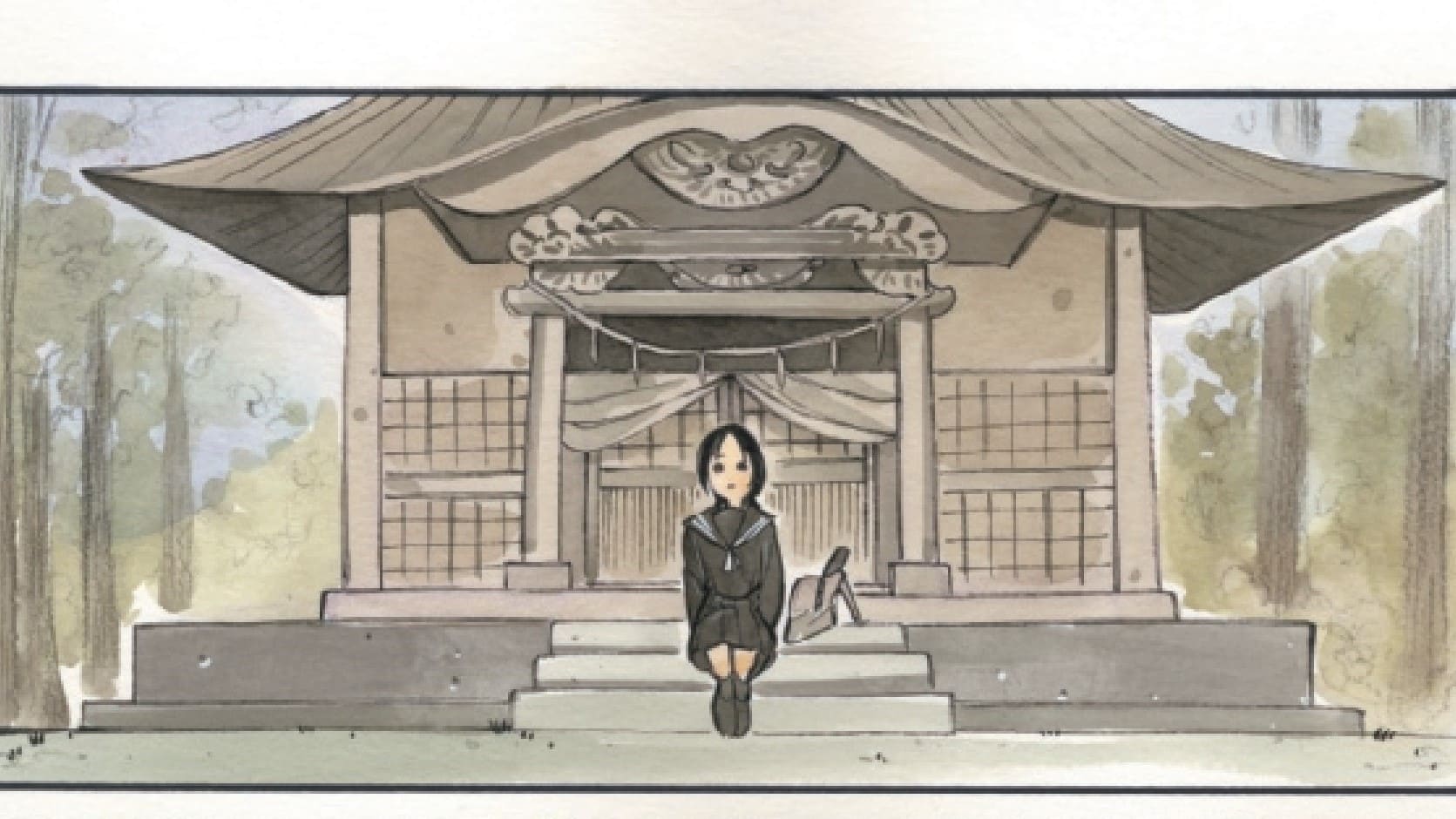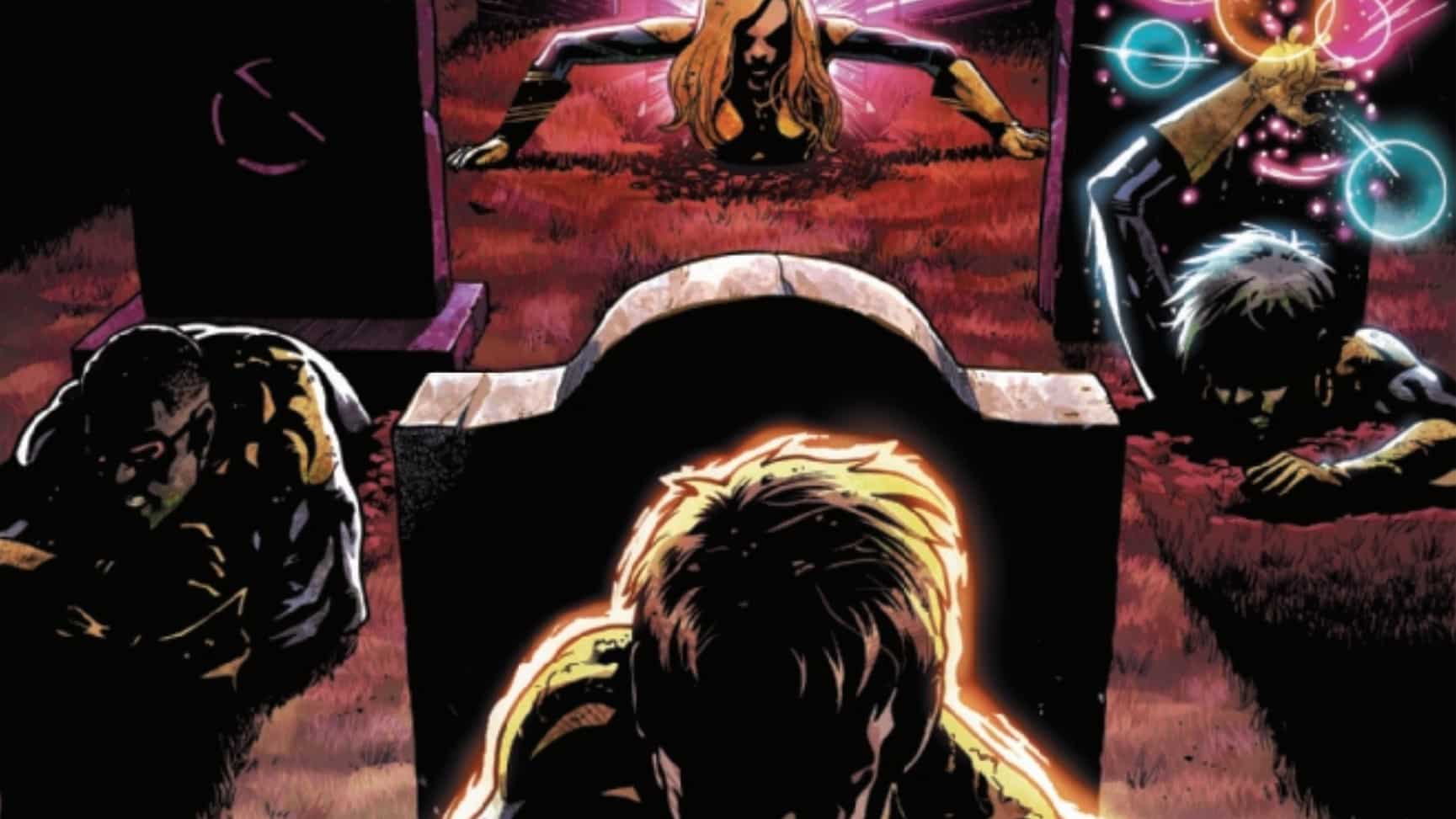Charles Xavier. Beast. Amanda Mueller. Moira MacTaggert. Magneto. Some of the greatest minds and experts on mutantkind are assembled by Mister Sinister to discuss the evolution of Homo superior … but to what devious end? Rest assured, there’ll be at least one dead body before dessert at this meeting of the Eighth Circle. Dan “Never Drew an X-book” Jurgens joins Fabian “Daddy Fabez” Nicieza for a 1990s throwback tale in X-Men Legends #10, inked by Scott Hanna, colored by Alex Sinclair and lettered by Joe Caramagna.
Dan Grote: Austin, you’re a fellow elder statesman of the fandom and an X-scholar. How often do you think about X-Men Vol. 2 #34?
Austin Gorton: I mean, more than most ordinary people do, but it’s definitely not topping the list of old X-Men issues I think about very often. I mostly remember it for being the one issue of X-Men (vol. 2) between the wedding of Scott and Jean and “Phalanx Covenant” that is simply … there. Issues #31-32 clean up Nicieza’s awkward Psylocke retcons, #33 tells that great Gambit/Sabretooth flashback story, and #35 is the issue where Scott and Jean come back from their honeymoon in The Adventures of Cyclops and Phoenix. Issue #34 is mostly just a time-killer issue. Is this one of your faves, Dan? Were you excited to drop back into this hyper-specific moment?
Dan: No. No, I was not.
Dancing within the Raindrop

Dan: Right away, from the opening two-page dinner splash, we can tell something’s screwy. At the time this comic is intended to take place — during the aforementioned X-Men #34 — Beast had blue fur, Magneto was comatose in space, Charles did not have the use of his legs and Amanda Mueller, aka the Black Womb, hadn’t appeared in comics yet. We know Fabian and editorial are smarter than to allow such gaping continuity oversights, so what’s the play?
Over the course of the issue, we’re treated to a series of reveals that lets us know that not only are we not ignoring continuity, we’re getting granular AF. You can get away with not reading the X-Factor two-parter this issue references (the one where Malice possesses Havok in a failed bid to escape Sinister’s clutches), but this issue was meant to be read in concert with X-Men #34, a 28-year-old comic you either have to have in your longbox or have a subscription to Marvel Unlimited to read.
Austin: Your longbox, Marvel Unlimited or (shameless plug) … an online review of the issue to refresh your memory.
Dan: Love that hustle. Respect.
Anyway, X-Men Legends is a series devoted to dredging up the past, to exploring past mysteries and perhaps seeding new ones. But Austin, how deep is too deep a dive into the past?
Austin: If this isn’t too deep a dive into the past, it’s pretty dang close to it. We’ll get into the nitty gritty of it, but my biggest takeaway from the issue is “what was even the point of that?” Obviously, the Adam-X story that kicked off this series was one Nicieza had wanted to tell for a while. The Simonson/Simonson issues took place in a largely unexplored era of X-Factor’s history. The three-part Wolverine story that just concluded was, essentially, Larry Hama doing Larry Hama things with the character. But I have no idea what this is meant to be doing. Amanda Mueller is a creation of Nicieza’s (Though when I think of her — if I ever do — it’s usually in the context of that one X-Men Legacy story Mike Carey wrote), but beyond that, I’m not sure what Nicieza is doing here.
This isn’t a particularly fertile period of X-history, as it falls between the post-30th anniversary celebration that culminates in Scott and Jean’s wedding and the launch of Generation X. The Legacy Virus plotline is (theoretically) running strong, yet that doesn’t seem to be the vague genetic problem Sinister and his clones are trying to address (even though the Sinister of this era was very much interested in it and actively investigating it). Yet as you mentioned, the clones end up reflecting a bunch of different eras, so there’s little tying it to a specific era. It’s just kind of a mess.
Dan: I do like the idea of these characters as a proto-Quiet Council or mutant Illuminati, but there’s no real neat point at which you can shove them all in a room together without them being clones in an interdimensional stasis field.
Another thing Nicieza picks up from #34 that I’m almost positive has never been touched on again is the idea that Sinister cloned in pairs, Noah-style. In #34, clones of the Marauders Riptide and Sabretooth emerge from their vats to attack the trespassing Beast, Psylocke, Gambit and Rogue. Here, we have six clones of some of the greatest genetic minds on the planet, melting away two by two. Nowadays, Sinister seems a lot less limited in how many mutants he can clone and when, but that’s a good segue into our next topic …
Sinister Secrets of the Past

Dan: The Sinister of 1994 is a very different animal from the one we know today. For one, he didn’t have a mutant gene. For another, he wasn’t the arch, eternally amused sonuvabitch we know and love from Hellions. This is the Sinister who would pop up from time to time in early to mid-’90s comics to tease his knowledge of mysteries like the third Summers Brother and how to cure the Legacy Virus and left all the comic relief to his goons, the Nasty Boys.
Austin, as one of our senior Hellions correspondents, how did you feel about this albeit-clone Sinister who was not only cryptic but in the end attempts a redemption arc?
Austin: I am what I assume to be a rare kind of X-fan, one who holds conflicting representations of the same character in my head in equal esteem. The scheming bag-of-mysteries Sinister of the early ’90s is a foundational element of my comic book fandom; at the same time, I find the later, foppishly arch Sinister started by Kieron Gillen and written with such aplomb by Zeb Wells in Hellions to be an absolute delight. Yet the connective tissue between the two is … sparse.
The clone Sinister introduced here is an interesting aberration, but one which seems mostly disconnected from the arcs of either of the two Sinister presentations. Once again, I’m not quite sure what Nicieza is going for here, aside from the broadest “copy that doesn’t know it’s a copy grows beyond the original” beat. Do you have a better read on this?
Dan: The problem with a one-off story like this is you don’t get as much time to really absorb what you think might be going on or what the creators intended. Certainly, “While the Sinister’s away, the clones will play” is a classic story beat. But a Sinister who discovers humanity and mutantkind’s genetic fates are linked and with his last breath seeks to save them both a la the old Xavier’s dream? That’s … definitely something we haven’t seen before.
Were this story operating in Bar Sinister and not in ‘90s Sinister’s Tesseract folds, the other Sinisters likely would have given this Sinister all the wedgies and swirlies before he disintegrated into dust.
Actually, that’s another thing. For an evil scientist who’s been around for nearly 200 years, under Marvel’s sliding time scale, Sinister’s clone game was pretty terrible very recently.
Austin: The way the clones evolved as they degraded was very odd — sure, those of us reading this in 2022 get the references, but does anyone in the story? If so, shouldn’t Sinister be trying to figure out how his degrading clones are managing to predict the future status quos of certain characters? I get the desire to liven up some otherwise talky scenes, but it feels like another missed opportunity to do something bigger or bolder.
It’s really weird. Most of these X-Men Legends stories have tried to avoid stepping on very many butterflies (sometimes to their detriment); whether because the creators didn’t know better, or editorial steered them away, very little directly contradicts or otherwise complicates current events. But here, Nicieza seems to be introducing some whole new evolutionary concept via “Homo Unitus,” and it just seems destined to be a dead end given what’s going on in the Hickman era.
To be clear, I’m not suggesting these stories need to tie in tightly to present-day events or avoid adding wrinkles to established lore, but it seems weird to toss off this big idea that feels of a piece with but contradicts current examinations of human/mutant evolutionary relationships at the end of a one-shot issue with no clear path for any additional follow-up.
Dan: Preach. Here’s a question: Would a clone of Beast, isolated and not mucking about with Brand chemicals, still turn furry as it degrades? If cat Beast is a secondary mutation, how would non-furry Hank have transformed? And why did we skip the more ape-like Beast of the Bendis era to now? A lot of that lies on the artist …
A Legend, but Not That Legend

Dan: We’ve talked before about this series’ choice of artists not pulling from the same pool of legends as its writers. This issue is peculiar in that we definitely get an art legend of the ’90s, but one known more for his work with the Distinguished Competition. Austin, what is your experience with Dan Jurgens?
Austin: I am definitely familiar with Jurgens’ Superman work — at the very least, the iconic “Death of Superman” story and the subsequent follow-ups, but I wouldn’t say I know his work terribly well. I tend to think of his style as a sort of platonic baseline of comic book art: clear, bright and easy to follow from a storytelling perspective, but never the flashiest or most stylistic.
That said, while the art is fine in terms of presenting the action and making clear the beats of the story, his inclusion is another odd choice. I guess the hook is “This story (sort of) takes place in the ’90s, Dan Jurgens was drawing stuff in the ’90s!”?
How about you? Any strong thoughts on Jurgens or why he was tapped for this issue?
Dan: He was available and has a track record of making deadline? Honestly, that’s usually what it comes down to.
But man, rereading #34 made me wish we’d gotten some fresh Andy Kubert art. Kubert was the first artist I was exposed to when I started collecting monthly X-Men comics, and I just loved his style. He’s an amazing combination of his dad Joe’s classicism and the extreme ‘90s style, while remaining more grounded than his brother, Adam. He mostly draws for DC these days, but man, if he had drawn this issue and Sinister, I think I would have cried.
That said, I shouldn’t downplay Jurgens’ accomplishments. The man created Booster Gold!
What about you, Austin, were you a Kubert guy?
Austin: I got into comics just before Kubert got his regular gig on X-Men (Vol. 2), so I spent the first year or so of his tenure just being mad he wasn’t Jim Lee (and, in the defense of my younger self, his early issues on the book are a little rough). But he grew on me, and I now consider him as one of my favorite X-artists. The specific time in which this story is set is right around when he peaks on the book as well, the point at which he had become arguably the definitive X-artist right before Joe Madureira shows up for his regular gig over on Uncanny, which makes Kubert’s absence here all the sadder. Obviously, Andy Kubert is one of the names of names when it comes to artists now, but getting him back for this issue would have made it truly legendary.
X-traneous Thoughts
- X-Men #34 had some classic ads, including Chef Boyardee’s offer of an X-Men glow-in-the-dark poster drawn by Jim Steranko, Punisher Meets Archie, Beavis and Butthead trading cards and the Flair ’94 Marvel Universe inaugural edition set, which includes a card for “Bodyslide.” Not Cable, just the fact that he can teleport and had his own cool name for it.
- Those Flair ‘94 cards were so shameless — extra expensive for repurposed art that often suffered compared to the original due to the computer effects being used on the cards.
- X-Men #34 also had a bullpen note written by Mark Gruenwald. Sniffle …
- Other weird cloning thoughts: If a clone of Moira dies, should the timeline be reset? It clearly doesn’t here (because Nicieza was likely uninterested in addressing it), though I suppose the unique nature of the tesseract environment and/or Sinister’s particular cloning methods are the explanation for that in-universe.
- Shit, Austin, you just melted by brain.
- Funny how the word “Tesseract” has such different connotations now. Thanks, Feige!
- Wonder what Threnody’s up to these days on the island. What need is there for a death-energy empath on Krakoa? … Reckon she could’ve helped X-Factor had that book kept going and the team not been stripped for spare parts. (Austin: they need to bring back all these ’90s-era characters with hyper-specific powers and put them on a team together, stat!)
- I miss this era’s Beast. He ain’t never coming back, though.
- Sinister couldn’t care less about Josh Gibson’s home run power. That said, I could see him manipulating the McGwire/Sosa home run feud of the late 1990s.







